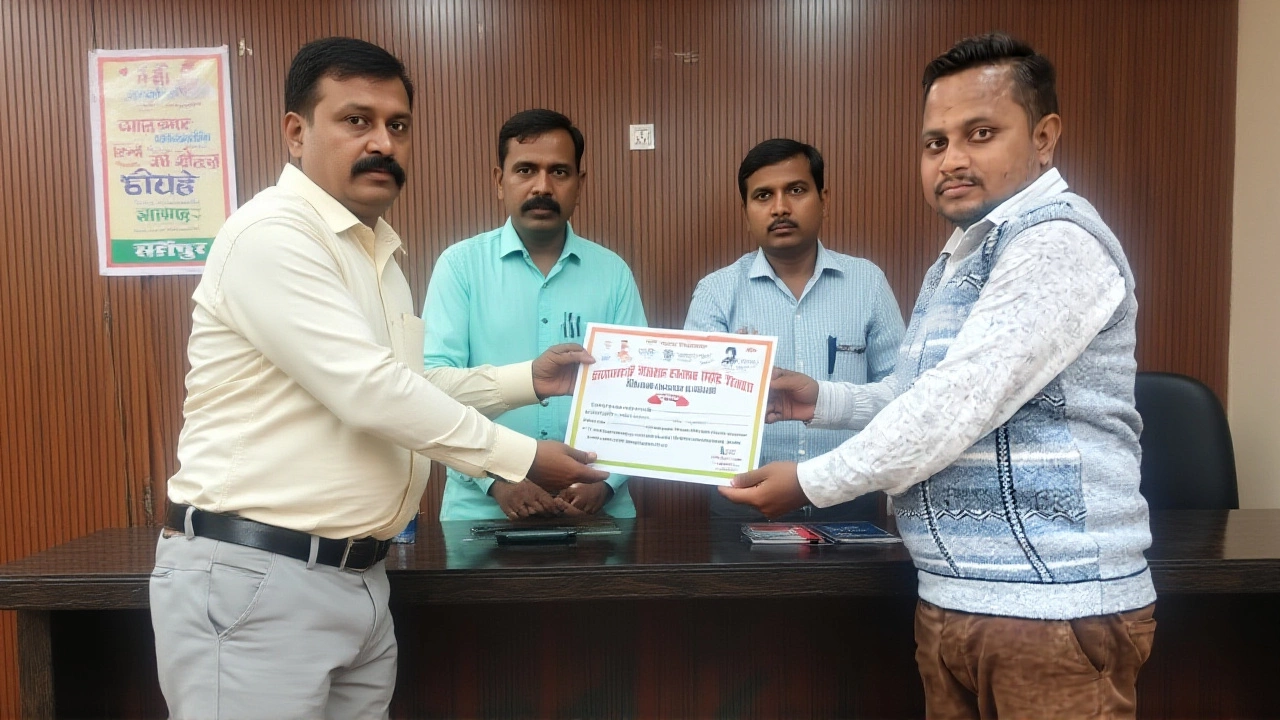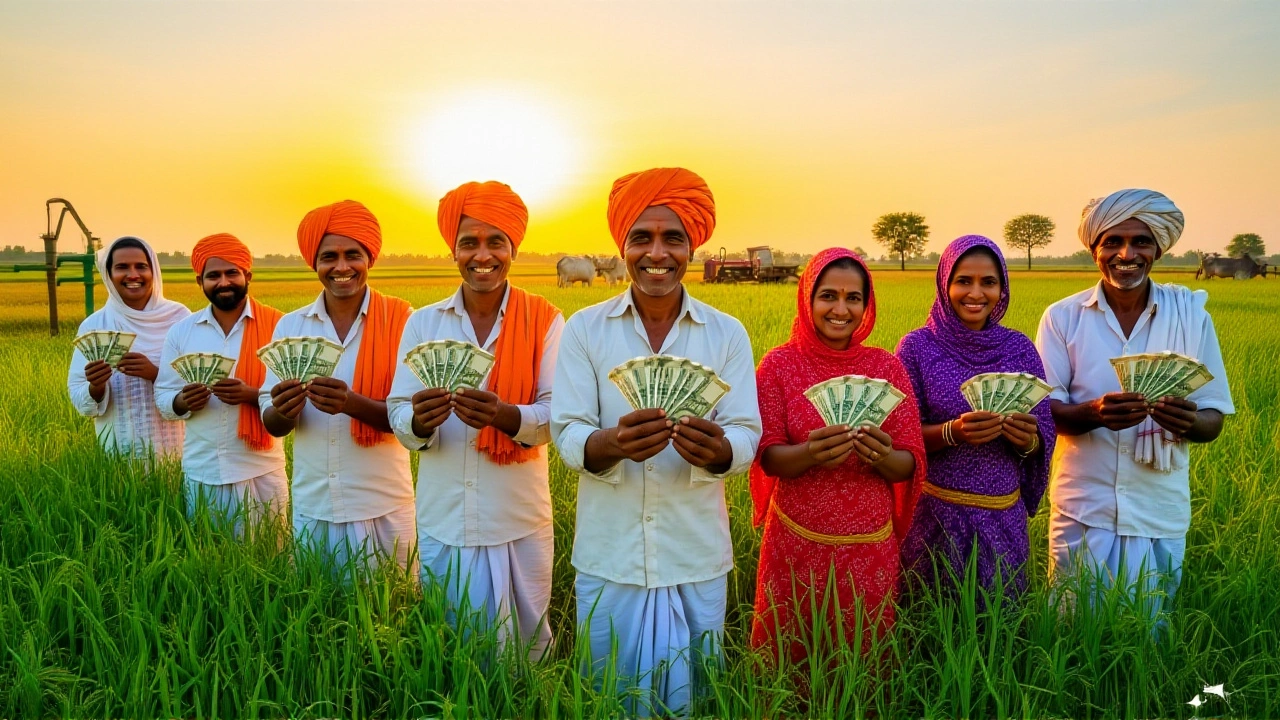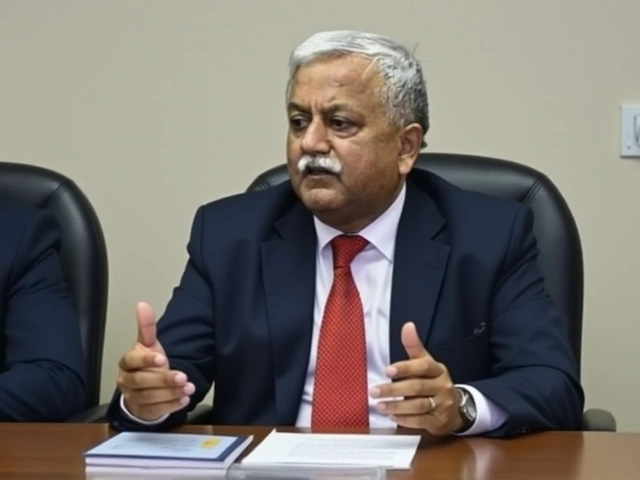On November 19, 2025, Narendra Modi stood under the clear Tamil Nadu sky in Coimbatore, announcing the release of the 21st instalment of the Pradhan Mantri Kisan Samman Nidhi (PM-KISAN) scheme — this time, ₹18,000 crore flowing directly into the bank accounts of nearly 9 crore farming families. The timing wasn’t accidental. Just hours earlier, Modi had inaugurated the South India Natural Farming Summit 2025, tying the cash transfer to a broader vision: empowering farmers not just with money, but with sustainable methods. The move sent ripples through rural India, where every ₹2,000 isn’t just income — it’s seed, medicine, or a child’s school fee.
How the Payment System Works — And Why It Matters
The Ministry of Agriculture and Farmers Welfare handles the PM-KISAN scheme with military precision. Payments are made quarterly: April-July, August-November, and December-March. Each instalment delivers ₹2,000, totaling ₹6,000 annually to eligible landholding families. But eligibility isn’t automatic. Farmers must have land records verified on the PM-KISAN portal, their bank accounts linked to Aadhaar, and e-KYC completed via biometric, OTP, or facial recognition. As of November 2025, the Ministry reported a 98.7% Aadhaar seeding rate — one of the highest in any direct benefit scheme globally.What happens when someone misses out? Often, it’s not corruption or delay — it’s incomplete verification. The government has launched village-level drives across all 718 districts, deploying Village Level Entrepreneurs (VLEs) at Common Service Centers to help farmers complete e-KYC. In Uttar Pradesh and Bihar, field teams have visited over 1.2 million households in the last six weeks alone.
Who Benefits — And Who’s Still Missing Out
Since its launch on February 24, 2019, PM-KISAN has disbursed over ₹3.70 lakh crore to more than 11 crore families. That’s nearly half of India’s estimated 22 crore farming households. But here’s the twist: many small and marginal farmers — especially women-headed households in Odisha, Jharkhand, and Chhattisgarh — still aren’t on the list. Why? Land titles are often in the name of deceased relatives, or records are handwritten and unverified."We’ve got the money, but not the paper," said Laxmi Devi, a 52-year-old farmer from Palamu district, who cultivates two acres but can’t prove ownership. "My husband passed away in 2020. The village office says I need a succession certificate — but the court takes six months." The Ministry admits the gap exists and says its new farmer registry aims to fix it by 2026.

From Cash to Confidence: The Ripple Effect
An NCAER study from 2019 found that PM-KISAN increased rural consumption by 14% in recipient households. Farmers spent 42% on farm inputs, 28% on healthcare, and 19% on children’s education. In Telangana, school enrollment among farmer children rose 11% in two years after payments began."Before PM-KISAN, I borrowed at 2% per week from moneylenders," said Rajesh Kumar, a rice grower in Andhra Pradesh. "Now, I buy fertilizer in bulk. My wife opened a small savings account. Last month, we sent our daughter to college. That’s dignity. Not charity."
What’s Next? The Push for a National Farmer Registry
The Ministry isn’t stopping at payments. By March 2026, it plans to launch a unified digital farmer registry — integrating land records, Aadhaar, crop data, and soil health cards into one platform. This could eventually link PM-KISAN to crop insurance, market prices, and even credit eligibility. "We’re moving from cash handouts to a full ecosystem," said Agriculture Minister Shivraj Singh Chouhan in his November 14 statement. "This isn’t welfare. It’s investment."But critics warn that without land reform, digital access, and fair procurement policies, cash transfers alone won’t solve structural problems. "₹6,000 a year is barely enough to cover seeds and pesticides in many states," says Dr. Anjali Mehta, an agricultural economist at the Indian Council for Research on International Economic Relations. "We need price support, storage, and fair markets. The money helps, but it’s a bandage on a broken leg."

What Farmers Need to Do Now
If you’re a farmer and haven’t received your instalment:- Visit pmkisan.gov.in and click ‘Know Your Status’
- Enter your registration number or Aadhaar
- Complete e-KYC via OTP, biometrics, or face authentication
- If stuck, visit your nearest Common Service Center — they’re free and available in every block
Payments are typically credited within 72 hours of successful verification. No agency charges for this service. Beware of fraudsters claiming to ‘help’ for a fee.
Frequently Asked Questions
How do I check if I’m eligible for PM-KISAN?
To qualify, you must be a landholding farmer with cultivable land registered in your name or your family’s name on state land records. Your bank account must be linked to Aadhaar, and e-KYC must be completed via the PM-KISAN portal. If you’re unsure, visit pmkisan.gov.in, enter your details, and check your status. Over 11 crore families have benefited since 2019, but many smallholders — especially women and tribal farmers — remain unregistered.
Why haven’t I received my ₹2,000 yet?
The most common reason is incomplete e-KYC — 92% of failed payments are due to unverified identity. Other causes include mismatched bank details, unseeded land records, or Aadhaar not linked to your mobile number. Visit a Common Service Center or use the PM-KISAN portal to fix this. Payments are processed within 72 hours of successful verification. If you’re still stuck after 10 days, contact your district nodal officer.
Is PM-KISAN available to tenant farmers or landless laborers?
No. The scheme currently only covers landholding farmers whose names appear on official land records. Tenant farmers and landless laborers are excluded, which has drawn criticism from agrarian groups. The Ministry is exploring pilot programs in select states to include sharecroppers, but no nationwide expansion is planned yet. Some states, like Kerala and West Bengal, have launched their own supplementary schemes for these groups.
How does PM-KISAN compare to previous farm support schemes?
Unlike crop insurance or subsidy schemes that pay for inputs, PM-KISAN gives cash directly to farmers with no strings attached. It’s simpler, faster, and less prone to corruption. Since 2019, it’s reached more families than any previous central farm scheme. However, critics argue it doesn’t address price volatility or market access. The ₹6,000 annual amount is fixed, while input costs have risen 35% since 2019 — meaning the real value has eroded.
What’s the government’s long-term goal with PM-KISAN?
The government aims to turn PM-KISAN into the backbone of a digital farmer ecosystem — linking payments to soil health data, market prices, and credit scoring. By 2026, the unified farmer registry could allow farmers to access low-interest loans, insurance, and export opportunities directly through the portal. The goal is to move from emergency cash to financial inclusion. But experts say success depends on fixing land records, expanding digital access in remote areas, and ensuring transparency in data usage.
Has PM-KISAN reduced farmer distress and suicides?
Data from the National Crime Records Bureau shows a 12% decline in farmer suicides in states with high PM-KISAN coverage between 2019 and 2024, though correlation isn’t causation. States like Punjab and Maharashtra, where debt levels remain high and crop prices volatile, still report elevated suicide rates. The scheme helps with immediate liquidity — covering medical bills or school fees — but doesn’t solve deeper issues like debt traps, water scarcity, or lack of crop diversification. Experts say it’s one tool, not a complete solution.






